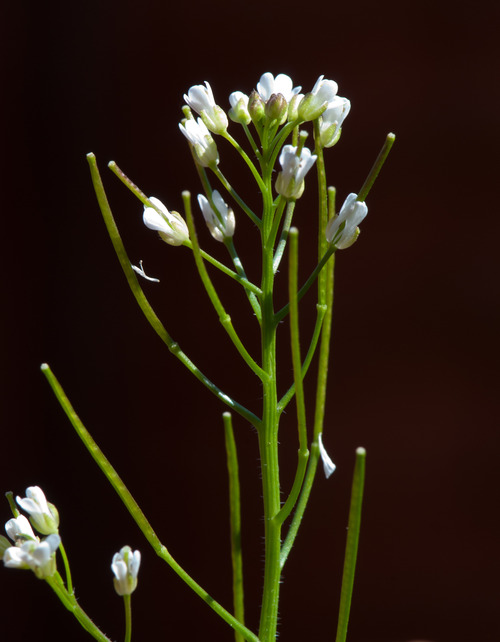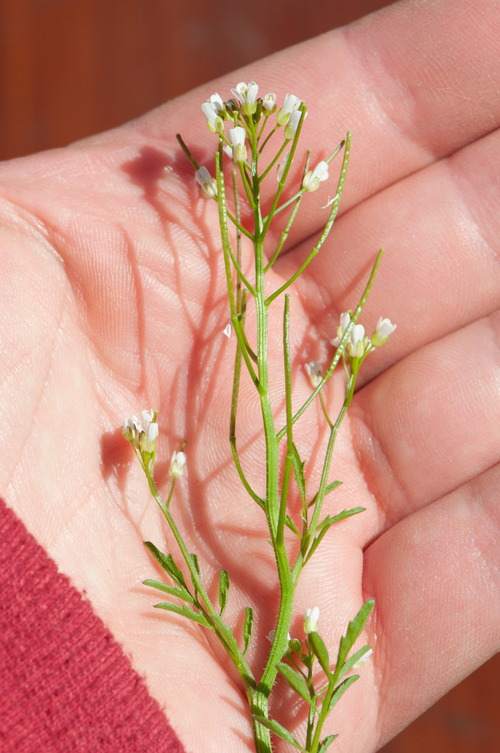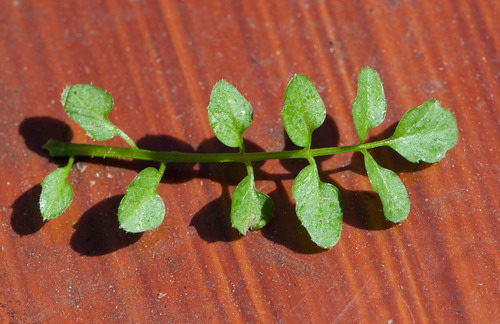

This is a special little herb, which for me never gets enough attention or credit for how it tastes. It’s very common, and the chances are whilst you are reading this, there is a small patch either growing in your garden, or growing very close nearby. It suffers a life of lawnmowers and being dug up by gardeners who loathe it. However, I’m sure that if these gardeners stopped to pay it a little more attention, then the chances are it would be left to grow happily.
Hairy bittercress is a small plant of approximately 5-30cm tall. It has minute white flowers, and dark green leaves which form a rosette close to the ground. The seedpods are cylindrical and when ripe, the case explodes with force, dispersing the seeds some distance, hence its ability to find its way across the garden in quick succession. It’s common on short grasslands and even rocky places and walls. It’s certainly abundant in my own garden here in Essex (South East of Britain).

You can gain an idea of size of the plant next to my hand.
The leaves, seed pods and flowers are all edible, and taste just like that of watercress Rorippa nasturtium-aquaticum, but without the risk of liver fluke, or illness from contaminated water. For me, I actually prefer it to watercress, and think it goes exceptionally well with cheese, or egg sandwiches. The leaves are usually available throughout the cold winter months as well as the warmer months.

Try leaving a pot of a peat in your garden and the chances are that some of this delightful little herb will soon pop up.
All of the pictures contained here were taken in my garden. I allow it to grow and I’d estimate that I have 200 plants at present. By removing the flowers and seed pods they continue to produce fresh leaves pretty much all year round.
LEAVES: the leaves have a peppery cress-like flavour and are perfect eaten raw in salads
FLOWERS: the small white flowers can be used in salads much like the leaves.
SEEDS: the seed pods and seeds may be eaten, but they are best when very young and light green in colour. As they age they may become tough and a little bitter.
BERRIES: n/a
ROOTS: n/a
OTHER USES / INTERESTING FACTS: the name ‘Hariy Bittercress’ is a poor one, as the plant only has a light covering of hairs as seen in the close-up picture.

Bernadette B. Byrne on 28/05/13
Hi there,
I have been reading with interest your article on 'Hairy Bittercress' & would really like to find some . . . . .
Whereabouts are you in Essex, as I too am in Essex - Wickford?
I would appreciate a few pointers as to where best to source this please/
Regards,
Bern.
Janet Bailey on 12/05/13
Super picture, great info, thanks !
My garden is full of these after all this rain and was wondering if we could eat them as our garden is organic so anything grown there should be good )I gave up with veg which doesn't grow well here, bit shady, though borage grows brilliantly).
Kris on 29/05/13
Thanks, Janet :)
Bern, currently in Chelmsford. This little plant grows frequently in gardens, pots, walls and the sides of pavements. It really is common, and once you get your 'eye-in' you'll be spotting it just about everywhere.
Try garden which have some bare patches, usually on dry(ish) or stony ground. It tends to avoid long grass. If you fill some pots with peat, and leave them, within a few months you'll probably have some growing.
If I can of more help, just let me know.
Thanks